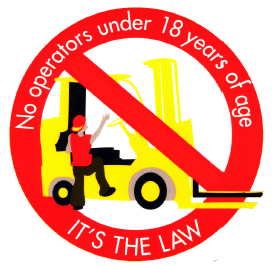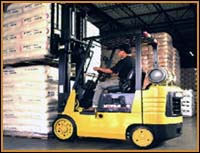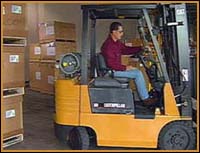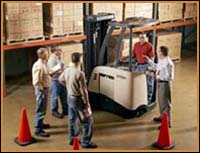Powered Industrial Trucks (Forklift) eTool
Powered Industrial Trucks (Forklift) eTool
Powered industrial trucks, commonly called forklifts or lift trucks, are used in many industries, primarily to move materials. They can be used to move, raise, lower, or remove large objects or a number of smaller objects on pallets or in boxes, crates, or other containers.
The hazards commonly associated with powered industrial trucks vary depending on the vehicle type and the workplace where the truck is used. Each type of truck presents different operating hazards. For example, a sit-down, counterbalanced high lift rider truck is more likely than a motorized hand truck to be involved in a falling load accident, because the sit-down rider truck can lift a load much higher than a hand truck. Workplace conditions also present different hazards. For example, retail establishments often face greater challenges than other worksites in maintaining pedestrian safety.
The best way to protect employees from injury also depends on the type of truck operated and worksite where it is being used. This eTool* specifically provides information on OSHA's Powered Industrial Truck requirements [29 CFR 1910.178] and industry best practices addressing:
-
Types & Fundamentals
The differing types and fundamentals of powered trucks -
Operating the Forklift
The basic operating rules and safe work practices -
Understanding the Workplace
How workplace conditions can affect safe operation -
Training Assistance
Operator training required by OSHA

UNDER 18 years of age to operate a forklift or for anyone OVER 18 years of age who is not properly trained and certified to do so. [More...]
See OSHA's Workers' Rights page for more information on rights and protections.
Note: This eTool is intended as a resource for providing training under OSHA's Powered Industrial Truck standard. This eTool focuses on powered industrial trucks commonly used in general industry. It is not a substitute for any of the provisions of the Occupational Safety and Health Act of 1970, for the powered industrial truck standard, or for any other OSHA standards. It is also not a substitute for a powered industrial truck operator training program.





